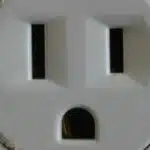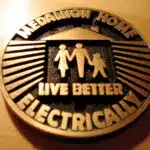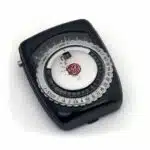Light switches are an essential part of our daily lives, allowing us to control the flow of electricity and illuminate our surroundings. But have you ever wondered how a light switch actually works? As electrical engineers, we are constantly working to understand and improve the technology that powers our modern world. In this article, we will explore the inner workings of a light switch and explain the principles behind its operation.
A light switch is a simple yet effective device that controls the flow of electricity to a light fixture. It consists of two metal contacts, called terminals, which are connected by a switch mechanism. When the switch is in the on position, these terminals are closed and electricity flows through them, powering the light bulb. When the switch is turned off, the terminals are separated and the flow of electricity is interrupted, causing the bulb to turn off. Understanding how this process works requires knowledge of basic electrical principles such as circuitry and conductivity. By exploring these concepts in detail, we can gain a deeper understanding of how a light switch operates and appreciate its importance in our daily lives.
Electrical Current And Circuitry
Electrical current, the flow of charged particles, is what powers our electrical devices. It is generated by power plants and travels through conductive materials such as copper wire to reach our homes. However, not all materials are equally conductive; some materials, like rubber or glass, resist the flow of electrical current.
Electrical resistance is a measure of how much a material resists the flow of charged particles. The more resistance a material has, the less electrical current can pass through it. Electrical engineers use Ohm’s law to calculate the resistance in a circuit: V=IR, where V is voltage (the force that drives the current), I is current (the flow of charged particles), and R is resistance (the opposition to the flow of charged particles).
Conductive materials have low resistance and allow electrons to move freely through them. Copper wire is commonly used in electrical wiring because it has excellent conductivity and can carry large amounts of electrical current without overheating. Understanding conductivity and resistance is crucial for designing safe and efficient electrical circuits. In the next section, we will explore how these concepts apply specifically to light switches.
Conductivity And Resistance
How does a light switch work? Understanding the basic principles of electrical current and circuitry can help us answer this question. Electrical current is the flow of electrons through a conductor, such as a wire. Circuitry refers to the path that an electrical current can take through a series of interconnected components, including switches.
When we flip a light switch, we are essentially completing or interrupting a circuit. The switch is designed to control the flow of electrons through the wires by either allowing or preventing them from passing through. This is achieved by using materials with different resistance levels to adjust conductivity.
Resistance is an essential factor in understanding how switches work. Resistance refers to how easily electrons can move through a material. Materials with high resistance impede electron flow, while those with low resistance allow for easy movement. In switches, materials with high resistance are used to create gaps or breaks in the circuit when the switch is in the “off” position, effectively blocking electron flow and turning off the light.
In summary, understanding conductivity and resistance helps us comprehend how switches work at their most fundamental level. By controlling electron flow through different materials, switches can be used to complete or interrupt circuits and turn on or off electrical devices like lights. In our next section, we will delve into another critical aspect of electrical circuitry: the role of wires and connections in transmitting electricity safely and efficiently.
The Role Of Wires And Connections
Identifying wires requires the use of specialized tools and techniques such as a multimeter to determine the purpose and gauge of the wire. Connecting wires requires the use of appropriate connectors and terminals, ensuring a secure and waterproof connection. Grounding wires is necessary to ensure the safety of the device, allowing electricity to flow to the ground and preventing shocks. Internal connections are typically achieved through the use of solder, providing a reliable and low-resistance connection.
Identifying Wires
It’s essential to identify wires properly before working with any electrical circuit. Failure to do so can result in serious injuries or even fatalities. Wire identification techniques are critical for electricians and electrical engineers to ensure safety and efficiency in their work.
One common wire identification technique is color coding. Most electrical wires have distinctive colors that indicate their function and purpose. For instance, black wires are usually hot, white wires neutral, and green or bare copper wires ground. However, color coding is not always reliable as some older wiring systems may not follow the standard color-coding system.
Another wire identification technique involves the use of wire testing tools such as multimeters or continuity testers. These tools help electricians determine if a wire is live, grounded, or broken. By using these tools, they can quickly locate faults in electrical circuits and fix them without causing any damage.
In conclusion, proper identification of wires is crucial for ensuring safety when working with electricity. Electricians and electrical engineers need to master various wire identification techniques like color coding and using wire testing tools to avoid accidents that could be fatal. By doing so, they can serve others by providing safe and efficient electrical solutions for homes and businesses alike.
Connecting Wires
Proper wire connections are essential for ensuring the safety and efficiency of electrical systems. Electricians and electrical engineers need to know how to connect wires correctly to prevent accidents, malfunctions, or damage to equipment. The first step in connecting wires is selecting the appropriate wire gauge and insulation materials suitable for the application. Different wire gauges have varying thicknesses that determine their amperage capacity and resistance levels.
After selecting the right wire gauge and insulation material, it’s time to connect the wires. A reliable connection requires stripping off enough insulation from each wire end, twisting them together tightly, and covering them with a wire nut or tape. If not done correctly, loose connections can lead to overheating, sparks, fires, or even electrocution.
Besides traditional wire nuts or tape connections, other advanced techniques like crimping or soldering are also available for more secure connections. Crimping uses a specialized tool that compresses a metal sleeve around the stripped wire ends while soldering involves melting a metal alloy over the twisted wire connection. Whatever technique one uses, proper connection of wires plays an integral role in ensuring safe and efficient electrical systems.
Electricians and electrical engineers who understand how to connect wires properly can provide safe electrical solutions for homes and businesses alike. They have a crucial role in serving others by ensuring that their clients’ electrical systems function optimally without any safety concerns. Therefore, it’s essential always to follow standard wiring procedures when connecting wires regardless of their complexity level or application type.
Understanding Voltage And Amperage
To comprehend how a light switch works, it is essential to understand voltage regulation and power transmission. Voltage, measured in volts, represents the potential energy difference between two points in a circuit. It is what makes electric current flow from one point to another. In contrast, amperage or current measures the volume of electrons flowing through a circuit per second, measured in amperes.
Electricity travels long distances to reach our homes and buildings through power lines. The high voltage generated at power plants is necessary for efficient long-distance power transmission, but it can be risky and harmful to humans and electrical equipment. Therefore, before reaching our homes, this high voltage needs to be regulated down to safe levels using transformers. This regulation process ensures that your home’s electrical appliances receive a consistent and safe level of voltage.
Nested bullet point list:
- Have you ever experienced an electrical shock? High voltage can cause severe injuries or even death if not handled correctly.
- On the other hand, low voltage can damage electronic devices by not providing enough power to run them properly.
- Proper voltage regulation is crucial for the safety of individuals and the longevity of electrical equipment.
In conclusion, understanding voltage regulation and power transmission plays a vital role in comprehending how light switches work. By regulating high voltages down to safe levels before entering our homes’ electrical systems, we avoid any potential hazards while ensuring consistency in supplying electricity. However, this is just one aspect of understanding how light switches work; there are other factors such as switch types and mechanisms that contribute significantly to their functionality.
Switch Types And Mechanisms
Light switches come in different types and mechanisms, each with its unique features. Two common types of switches are the toggle switch and rocker switch. A toggle switch is a simple on/off switch that has a lever that moves up and down to turn the light on or off. On the other hand, a rocker switch has a flat surface that tilts back and forth for turning the light on or off.
Toggle switches are easy to use and operate with one hand. They are ideal for controlling single lights or small groups of lights in a home or office setting. However, they may not be suitable for people with mobility issues as they require manual dexterity to flip the lever up or down. Rocker switches, on the other hand, provide excellent accessibility since they only need slight pressure to turn them on or off.
The mechanism behind how light switches work is straightforward. When you flick a toggle switch upwards, it completes an electrical circuit that allows electricity to flow through the wires and into the bulb, lighting it up. Conversely, when you flick it downwards, it breaks the circuit, which turns off the light. Rocker switches function similarly but use a different mechanism to complete or break an electrical circuit.
Moving forward onto our next section: Single Pole vs Three-way Switches…
Single Pole Vs. Three-Way Switches
Single pole switches and three-way switches are the two most common types of light switches used in households. Single pole switches control a single fixture from a single location, while three-way switches are used to control the same fixture from two different locations. The wiring configurations for these two types of switches differ slightly, but both require a hot wire to be connected to the switch.
Single pole switches have two terminal screws: one screw is brass-colored and the other is silver-colored. The black or red power supply wire connects to the brass-colored screw, while the black or red wire running to the light connects to the silver-colored screw. The switch placement is important as it determines which wire should be connected to each terminal screw.
Three-way switches have three terminal screws: one is brass-colored and the other two are usually dark-colored. The brass screw is called the common terminal and is typically located on one side of the switch. The dark screws are called travelers and are located on opposite sides of the switch. To properly wire a three-way switch, one traveler wire must be connected to each of the dark screws, while the hot wire must be connected to either traveler wire at one end and to the common terminal at the other end. Understanding these wiring configurations and proper switch placement can help ensure that your lights turn on and off correctly from any location in your home.
Moving forward into understanding how these switches operate, it’s important we understand how they function through their terminal screws. Terminal screws serve as connection points for wires that provide power to electrical devices such as light fixtures or appliances. In our next section, we will discuss in detail how these terminal screws function within single pole and three-way switches, including best practices for proper wiring techniques.
The Function Of The Terminal Screws
The terminal screws on a light switch are crucial components that allow the switch to function properly. These screws are typically located on the sides of the switch and serve as connectors for the wires that provide power to the switch. The screws come in different sizes, and it is essential to use the correct screwdriver size when tightening them.
One important consideration when working with terminal screws is wire gauge. Wire gauge refers to the thickness of the wire, which can vary depending on its intended use. It is crucial to match the wire gauge with the appropriate terminal screw size to ensure a secure connection. Using a screw that is too small for a thicker wire can result in a loose connection that can be dangerous or cause malfunctions.
When tightening terminal screws, it is essential to use the correct screwdriver size to prevent stripping or damaging the screw head. A stripped screw head can make it difficult or impossible to remove later if needed, resulting in additional work and potential safety hazards. Using a larger-sized screwdriver than necessary can also damage the surrounding components of the switch.
In addition to proper terminal screw usage, grounding and safety considerations are critical when installing or replacing light switches. Grounding ensures electrical currents flow safely through a circuit by providing an alternate path for excess current should there be any issues with wiring or appliances connected to it. Proper grounding helps prevent electrical shock and fire hazards. When working with switches, it is important always to follow safety guidelines and wear appropriate gear such as gloves and goggles if needed.
Grounding And Safety Considerations
When installing a light switch, it is important to consider grounding and safety measures. Grounding ensures that any electrical faults are safely directed away from users and into the ground. Proper grounding also helps prevent electrocution or electrical fires. To ensure proper grounding, the switch should be connected to a grounded circuit, which typically involves connecting a green wire to the switch’s grounding screw.
In addition to grounding, there are other safety considerations when installing a light switch. It is important to turn off power at the circuit breaker before beginning any work on the electrical system. Testing procedures should also be followed to assure safety before turning on power after installation. These testing procedures can include using a voltage tester or multimeter to verify that no current is present in the wires.
Installation tips for light switches include ensuring that all connections are tight and secure, using wire nuts or electric tape to protect exposed wires, and following manufacturer instructions carefully. Following these guidelines will help ensure proper function of the switch and reduce the risk of electrical hazards.
Transition sentence: Now that we have discussed grounding and safety considerations for light switches, let us delve into how light bulbs work.
How Light Bulbs Work
Light bulbs are an essential component of our daily lives. They provide us with the visibility we need to carry out our tasks, and they do so in a manner that is both efficient and cost-effective. The materials used in light bulbs include tungsten for incandescent bulbs and LED semiconductors for LED bulbs. These materials have been carefully selected to ensure that the bulb produces the desired level of illumination while consuming as little energy as possible.
Energy efficiency is a major concern when it comes to light bulbs. In recent years, there has been a push towards more energy-efficient bulbs, such as LED bulbs. These bulbs use significantly less energy than traditional incandescent bulbs, which means they are cheaper to run and better for the environment. Additionally, they have a longer lifespan, meaning they don’t need to be replaced as often.
To paint a picture of how light bulbs work, consider the following sub-lists:
Light bulb materials:
Tungsten (incandescent)
LED semiconductors (LED)
Energy efficiency:
LED uses significantly less energy
Cheaper to run
Better for the environment
Lifespan:
Longer lifespan than incandescent
Don’t need to be replaced as often
In summary, light bulb technology has come a long way over the years, with significant improvements being made in terms of energy efficiency and longevity. As consumers become more environmentally conscious, there has been a shift towards using more sustainable lighting options like LED bulbs. In the subsequent section, we will explore the differences between incandescent and LED bulbs in more detail.
Incandescent Vs. Led Bulbs
Energy efficiency is a critical factor in choosing the right light bulb for your home or office. Incandescent bulbs are known to be highly inefficient compared to LED bulbs. An incandescent bulb produces light by heating a filament inside the bulb until it glows, while an LED bulb uses a semiconductor device that emits light when an electric current passes through it. This fundamental difference in technology means that LED bulbs consume much less energy than incandescent bulbs.
Another important factor to consider when choosing between incandescent and LED bulbs is color rendering. Color rendering refers to the ability of a light source to accurately reproduce colors as they would appear under natural sunlight. Incandescent bulbs have been traditionally known for their excellent color rendering capabilities, but this comes at the cost of energy efficiency. On the other hand, LED bulbs can provide similar levels of color rendering while consuming far less energy.
Overall, it is clear that LED bulbs are superior to incandescent bulbs in terms of both energy efficiency and color rendering capabilities. While incandescent bulbs may still be preferred by some users for their warm glow and traditional appearance, it is important to recognize the negative impact they have on both our wallets and the environment. By switching to LED lighting, we can achieve significant savings on our electricity bills while also reducing our carbon footprint. In the subsequent section, we will explore how wattage and brightness play a crucial role in selecting the right LED bulb for your needs.
Wattage And Brightness
In the previous section, we discussed the differences between incandescent and LED bulbs. Now, let’s delve into how wattage and color temperature affect the overall brightness of a light source. Wattage measures how much energy a bulb consumes, while color temperature refers to the hue of the light emitted.
When it comes to wattage, higher numbers usually indicate a brighter light. However, this also means that more energy is being used, resulting in higher electricity bills. On the other hand, LED bulbs use significantly less energy than incandescent ones while producing the same amount of brightness. Color temperature can also affect how bright a light appears. For example, a bulb with a cooler (more blue) color temperature may appear brighter than one with a warmer (more yellow) color temperature even if they have similar wattages.
Energy efficiency is an important factor to consider when choosing light bulbs as it can significantly impact your costs over time. While LED bulbs are more expensive upfront, they last much longer and use less energy than incandescent bulbs in the long run. By switching to LED bulbs, you can save money on your energy bills and help reduce your carbon footprint.
Moving forward into our next section about dimmer switches and their operation, it’s important to note that not all light sources are compatible with dimmer switches. Incandescent bulbs work well with dimmers as they can be adjusted by changing the amount of electricity flowing through them. However, LED bulbs require specific dimmer switches designed for their technology to function properly. It’s essential to choose compatible products to ensure optimal performance and longevity for both your lights and switches.
Dimmer Switches And Their Operation
Did you know that dimmer switches are not only energy-saving, but also increase the lifespan of your light bulbs? According to a study conducted by the US Department of Energy, using a dimmer switch can save up to 40% on energy consumption. This is because when you dim a light, you reduce the amount of electricity flowing through the bulb, which in turn reduces heat and extends its life.
Dimmer switch installation follows a similar process to regular switches with an additional wire for controlling brightness levels. Unlike traditional switches, however, adjusting brightness levels requires a little more knowledge. The brightness level depends on the type of bulb used, so it’s important to choose the right dimmer switch and bulb combination. For example, LED bulbs require specific dimmers designed for their low wattage demands.
To adjust brightness levels with ease, use a slide or rotary dimmer switch that allows for gradual transitions rather than abrupt changes. Some modern dimmers even come with remote controls or smartphone apps for added convenience. Remember, improper installation or mismatched components may cause flickering lights or buzzing sounds.
In troubleshooting common light switch issues next section, we will discuss some common problems associated with both regular and dimmer switches that can arise from improper installation or malfunctioning components.
Troubleshooting Common Light Switch Issues
Switch malfunction is a common issue that homeowners face with their light switches. There are several troubleshooting tips that can help diagnose and fix the issue. One of the first things to check is if the switch is receiving power. This can be done with a voltage tester or by checking the circuit breaker. If there is no power, then it may be an issue with the wiring or circuit breaker.
Another common problem is when the switch does not turn off or on properly. This can be due to a damaged switch or incorrect wiring. Common wiring errors include reversed polarity and loose wires. Reversed polarity occurs when the hot wire is connected to the neutral terminal and vice versa, which can cause electrical shock and damage to devices connected to the circuit. Loose wires can also create issues such as flickering lights or even fire hazards.
To troubleshoot these issues, it is important to turn off power to the switch and double-check all connections for loose wires or reversed polarity. If necessary, replace damaged switches with new ones that match the current wiring configuration. By following these tips, homeowners can effectively diagnose and solve common light switch malfunctions without needing professional assistance.
Moving on from troubleshooting common light switch issues, it is important to know how to replace a faulty switch altogether in order to fully restore its functionality. In this next section, we will provide a step-by-step guide on replacing a light switch safely and efficiently.
Replacing A Light Switch: Step-By-Step Guide
In the previous section, we learned about some of the common problems that people face with light switches. These issues can range from flickering lights to switches that don’t work at all. If you’ve tried troubleshooting your light switch and still can’t seem to fix the problem, it may be time to replace it.
To replace a light switch, you’ll need a few tools. First, you’ll need a flathead screwdriver to remove the cover plate from the switch. Once you’ve removed the cover plate, you’ll need a Phillips head screwdriver to remove the screws that hold the switch in place. You may also need a voltage tester to make sure that there is no power running through the wires before you begin working on them.
One of the most common mistakes that people make when replacing a light switch is not turning off the power before beginning work. This can be extremely dangerous and could lead to electrocution or even death. Another mistake is not properly identifying which wires connect where before disconnecting them. This can lead to confusion and frustration when trying to install the new switch.
As technology advances, so do innovations in light switch technology. From smart switches that can be controlled by your smartphone or voice commands, to dimmer switches that allow you to adjust the brightness of your lights with ease, there are many options available for those looking for an upgrade. With proper installation and maintenance, these new technologies can provide greater convenience and energy efficiency for your home or business lighting needs.
Innovations In Light Switch Technology
Light switches have come a long way since their invention in the late 1800s. With the recent advances in technology, light switch innovations have been focused on increasing convenience and energy efficiency. One of the most significant improvements is smart switch integration, which allows users to control their lights remotely using a smartphone or tablet.
Smart switches are designed to be user-friendly and can be easily installed into existing electrical systems. They enable users to schedule their lights according to their daily routines, thereby reducing energy usage and costs. Additionally, smart switches can be integrated with other home automation systems, such as thermostats and security cameras, providing further convenience for homeowners.
Another exciting development in light switch technology is voice activated light control. This feature allows users to turn their lights on or off simply by speaking commands to a virtual assistant, such as Amazon Alexa or Google Assistant. Voice-activated light control provides an added level of accessibility for individuals with disabilities, making it easier for them to interact with their environment.
As technology continues to evolve, it is likely that we will see even more innovative developments in light switch technology. From more intuitive touchscreen interfaces to improved energy efficiency features, these advancements will continue to make our lives easier and more efficient. As such, it is crucial that electrical engineers remain at the forefront of these advancements so that they can continue serving others by creating better products that meet people’s evolving needs.
Conclusion
The light switch is a fundamental component in the operation of any electrical lighting system. It is responsible for completing or breaking an electrical circuit, which ultimately controls the flow of electricity to the light bulb. Through a combination of wiring, conductive materials and voltage regulation, a variety of different types of switches can be used, depending on the specific needs of the user. The use of dimmer switches has become increasingly popular in recent years, allowing users to adjust the brightness level of their lights as needed.
Despite their seemingly simple design, light switches can encounter various issues over time due to wear and tear or other factors such as improper installation. These issues can often be resolved through simple troubleshooting methods or by replacing the switch entirely. As innovations in technology continue to advance, new features are being added to light switches such as smart home integration and voice-activated controls.
In conclusion, understanding how a light switch works requires knowledge in circuits and conductivity as well as an understanding of voltage and amperage. Engineers have continued to develop new technologies that enhance this common household item through innovation and efficiency. However, it is important to note that even with these advancements, basic electrical principles will remain integral components in their operation. Light switches serve not only as practical necessities but also as symbols of technological progress in modern society.
Image Credits
- “bathroom light switch” by cmatulewicz (featured)

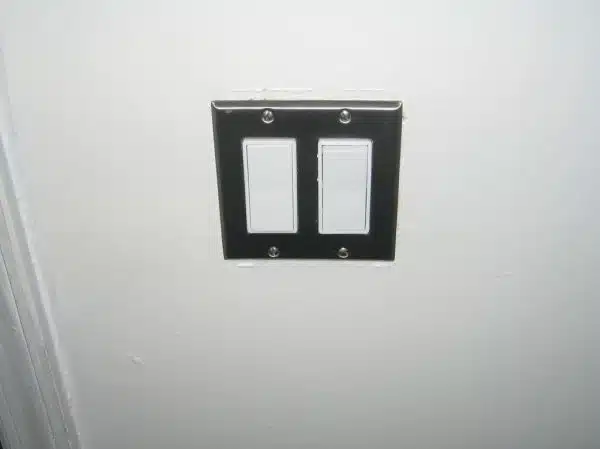
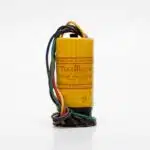





![How To Replace A Single-Pole Wall Switch 8 '... All in all it's just another [switch] in the wall.' ...](https://green-life.blog/wp-content/uploads/2023/05/17xmP5qMtVjq-150x150.jpg.webp)







